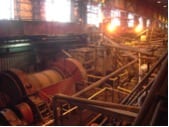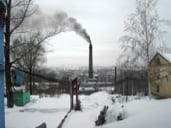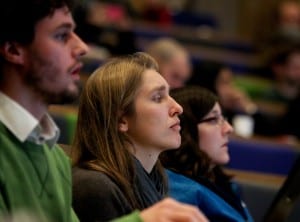Fisheries: voluntary self-regulation as a model for bold trade policy reform
By ucqbndj, on 21 March 2014
Voluntary self-regulation by organisations such as the Marine Stewardship Council promises to make fishing more sustainable. While self-regulatory efforts are a great start, it is questionable whether they alone suffice to tackle the task of making the world’s fisheries sustainable again. But they have a great – as of yet underappreciated – potential: complementing and facilitating government action by providing orientation for bold trade policy reforms.
Overfishing has led to the depletion or even collapse of many fish stocks. States have found it difficult to respond to the challenge of overfishing. Even within the EU, with its extraordinary level of inter-state cooperation, until recently fishing reform had been an extremely sluggish process[1].
While state inaction left the seas free to overexploitation, in the 1990s a private initiative promised to provide the much-needed responsibility. It took the collapse of fishing stocks to alert Unilever, one of the world’s biggest buyers of frozen fish, to identify overfishing as a threat to its business. Unilever soon teamed up with the World Wildlife Foundation (WWF) to initiate what would become the Marine Stewardship Council (MSC): a non-profit organisation which sets a standard for sustainable fishing and allocates the right to use its label to those found to behave in accordance with it[2].
According to the MSC its certification scheme now covers “over 10% of the annual global harvest of wild capture fisheries”[3]. While there has been criticism levied at MSC standards and compliance with it, it is largely considered to be a successful scheme.
Personally, I always look out for the MSC label when I buy fish but I’m never quite certain whether this actually makes much of a difference or just has a feel-good effect. For while my individual purchase might come from more sustainable fisheries it would still add to the aggregate global demand for fish. When the MSC’s Chief Executive, Rupert Howes, gave a presentation at the UCL Institute for Sustainable Resources (20 Feb 2014) I raised the question if, instead of consciously limiting my fish consumption, he would actually encourage me to buy more (certified) fish. He replied along the lines that increased demand for MSC certified fish actually makes MSC certification and thus the adherence to sustainable fishing standards more attractive to fishing companies.
WATCH THE PRESENTATION
Feeding the world and maintaining the productive capacity and integrity of marine eco-systems Rupert Howes, Chief Executive, MSC
I think his point is a very good one. Yet some doubts persist. While buying MSC certified fish may help to raise incentives for fishing companies to comply with sustainability standards, its purchase still keeps alive what I would call “a culture of fish consumption“: people will praise the taste of fish dishes, put up photos of them on the internet and floods of saliva will pour forth from their friends mouths. Now the saliva is there, moral virtue is supposed to rein it in. More expensive, certified fish is deemed “good”, while the cheap, “dirty” and unsustainable fish is “bad”. Those who can afford or prioritise “sustainable” fish can feel good about themselves, at ease with the world, while the consumers of non-certified fish should — in order to boost the market for sustainable fish — at least feel some slight unease around their taste buds. While ecological economists don’t tire to preach that the environmental costs of products should be reflected in their prices, here — like so often — the reverse holds true: one has to pay a premium for sustainably sourced fish.
Will consumers shift to certified fish quickly enough to save fishing stocks from collapsing and maritime life from severe disruptions? Perhaps it’s going to work. But it’s a risky bet. And if it doesn’t work – who is to blame? Consumers, because they didn’t buy the right fish? Or not enough of the right fish?
The success of the MSC labelling scheme shows that consumers are not just interested in the mere physical qualities of fish but also in the process by which it landed upon their platter. It demonstrates that market pull in one place can change fishing practices in another. It’s a testing ground for standardisation and monitoring activities.
All this makes a good case for revisiting the possibility of applying trade measures against the import of fish which sourcing doesn’t qualify as sustainable. The World Trade Organisation (WTO) is extremely wary of the introduction of “discriminatory” measures whose rationales can be interpreted as fig-leafs for protectionism. This translates into strong scrutiny towards restrictions on the basis of the process or the method by which a good is derived rather than by its mere physical qualities. Yet, the jurisdiction on the possibilities for enacting import restrictions based on “non-product-related processes and production methods (PPMs)” is far from exhaustive. Private standard setting and monitoring exercises such as those conducted by the MSC can help to demonstrate that “non-discriminatory” import restrictions on the basis of “non-product-related processes and production methods (PPMs)” can be designed and monitored[4]&[5].
What I suggest here is an appreciation of the pioneering role of private sector initiatives such as the MSC. Governments should draw on these foundations and insist on the adherence to similar standards as a precondition for market entry. The regulatory “pull” from a giant market such as the EU’s would be able to exert beneficial effects at far greater scale than what can currently be accomplished by private sector initiatives.
Once the, admittedly, giant leap of making the adherence to criteria of sustainable fishing a condition for market-entry is taken, fishing companies all over the world might develop an interest in lobbying governments to strengthen regulation and to cooperate in order to make their fishing grounds pass sustainability criteria.
Voluntary private self-regulation can be a model for the introduction of sustainability criteria in trade policy. Once private initiative is followed up by trade policy, the main worry about fish will hopefully be of culinary nature.
Nino is a doctoral researcher at the UCL Institute for Sustainable Resources. His research focuses on business interests towards environmental regulation and the interactions between innovation and regulation.View Nino’s profile.
[4] For a more detailed discussion see Fabrizio Meliadò, Fisheries Management Standards in the WTO Fisheries Subsidies Talks: Learning How to Discipline Environmental PPMs?,
Journal of World Trade 46, no. 5, 1083–1146.
[5] For a critical take on exclusion and potentially discriminating factors see Stefano Ponte, The Marine Stewardship Council (MSC) and the Making of a Market for ‘Sustainable Fish’,
Journal of Agrarian Change 12 (2012), no. 2-3, 300–315.
 Close
Close












